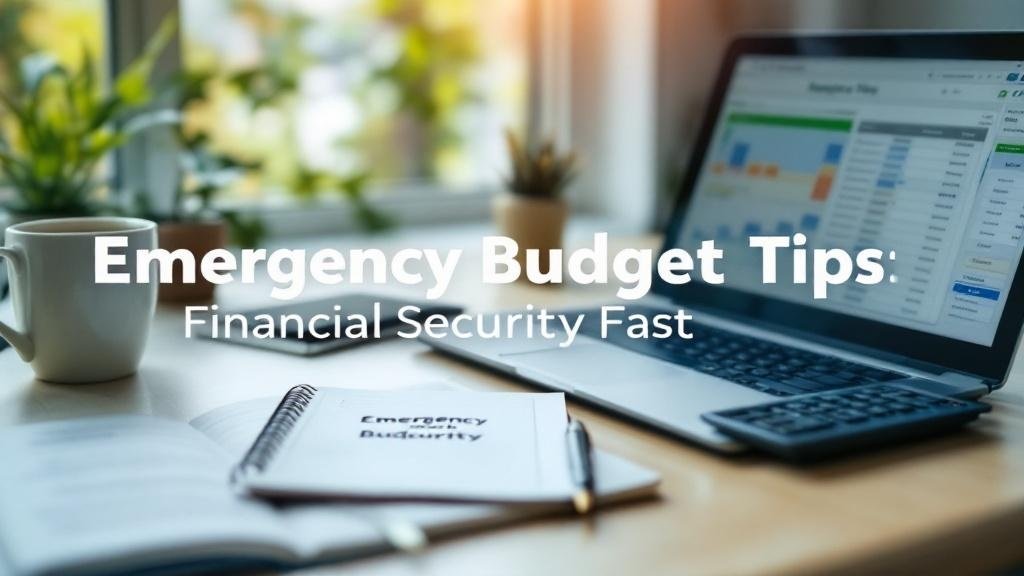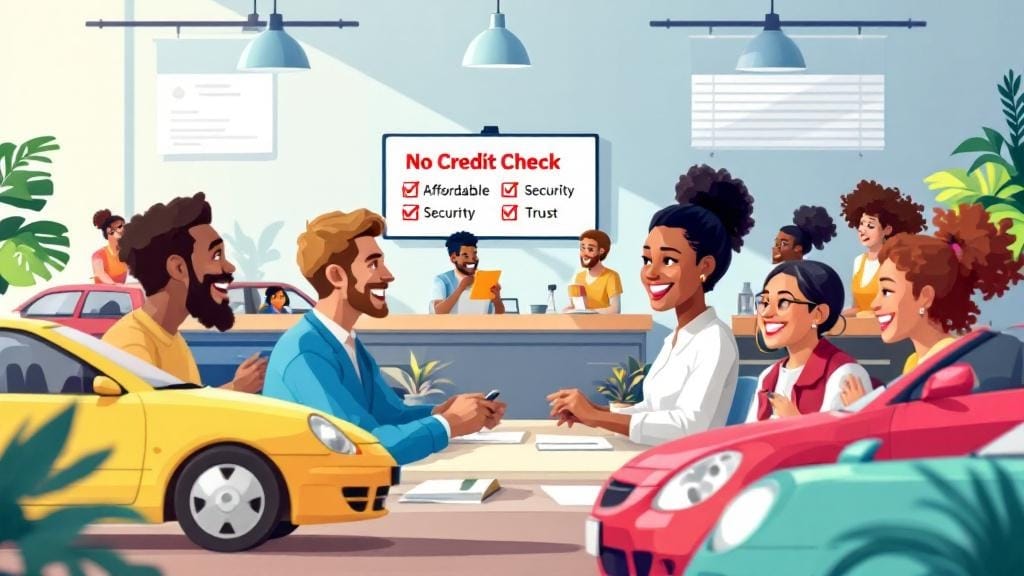Learn effective emergency budget tips and strategies to help you build financial security quickly. Understand how to manage your finances during a crisis and create an emergency savings plan.
Introduction
Life is unpredictable, and emergencies can strike when we least expect them. Whether it’s an unexpected medical expense, a job loss, or a car repair, having an emergency budget in place is crucial for financial security. But how do you create an emergency budget that truly works, especially when funds are tight?
In this article, we’ll dive into expert emergency budget tips, practical strategies for building an emergency savings plan, and how to prioritize spending during financial crises. We’ll also discuss real-life examples, answer common questions, and give you actionable advice to help you manage your money during unexpected situations.
Why You Need an Emergency Budget
Before we get into specific emergency budget tips, let’s first understand the importance of having one. An emergency budget isn’t just a “nice to have”; it’s a financial lifesaver. Here are a few reasons why you need an emergency budget:
Unexpected Expenses: Whether it’s a sudden medical bill or a car repair, emergencies often come with expenses that you didn’t plan for.
Job Loss or Income Reduction: If you lose your job or experience a reduction in income, an emergency budget helps you stay afloat while you find another source of income.
Financial Cushion: An emergency savings plan ensures you have a financial cushion to fall back on during tough times.
Having a solid emergency budget in place provides peace of mind and financial stability, even when life throws curveballs.
What is an Emergency Budget?
An emergency budget is a temporary, flexible budget designed to help you manage your finances during an unexpected event or crisis. Unlike your regular budget, an emergency budget focuses on prioritizing essential expenses while cutting back on non-essential ones.
How to Create an Emergency Budget
Creating an emergency budget involves evaluating your current financial situation, prioritizing necessary expenses, and making temporary adjustments to your spending habits. Here’s how you can create an emergency budget quickly and effectively:
Assess Your Current Financial Situation
Take a look at your income, current savings, and any other available financial resources.
Identify any immediate financial obligations (e.g., rent, utilities, loans).
Identify Essential vs. Non-Essential Expenses
Essential Expenses: These include things like housing, utilities, food, transportation, and insurance. These should be your top priority.
Non-Essential Expenses: Things like dining out, entertainment, subscriptions, and luxury purchases can often be delayed or eliminated.
Trim Down Unnecessary Spending
Review all your discretionary spending (e.g., gym memberships, streaming services) and see where you can cut back.
The goal is to free up as much money as possible to cover the essentials.
Build a Temporary Emergency Savings Plan
If you don’t have an emergency fund yet, try to set aside whatever you can, even if it’s just a small amount, until you’re back on track.
Ideally, you should aim for 3-6 months of living expenses in your emergency fund, but even a small cushion is better than nothing.
Track Your Spending Closely
During a crisis, it’s important to monitor every dollar you spend. Use budgeting apps or spreadsheets to keep track of your expenses and ensure you’re staying within your emergency budget.
Real-Life Example of an Emergency Budget
Let’s say you’ve just lost your job, and your income is temporarily reduced. Here’s how you might apply these emergency budget tips:
Essential Expenses: Your rent, utilities, and groceries are a priority. You’ll need to continue paying for these, so they stay on top of your budget.
Non-Essential Expenses: Cut out subscriptions like Netflix or cancel your gym membership until you’re back on your feet.
Savings: If you don’t have an emergency savings plan yet, you might need to rely on whatever savings you have or consider borrowing from family or friends.
By prioritizing your essential needs and minimizing non-essentials, you’ll stretch your resources longer and reduce financial stress.
Key Emergency Budgeting Tips
Here are some additional emergency budget tips that can help you manage your finances during tough times:
1. Prioritize Your Emergency Fund
If you don’t have an emergency savings plan yet, start building one now. It may not be easy to save money during a crisis, but even small contributions can make a big difference in the long run. Here are a few ways to build an emergency fund quickly:
Set up Automatic Transfers: Even if it’s just $50 a month, having automatic transfers to a savings account can help you build a cushion over time.
Cut Back on Non-Essentials: Every time you cut an unnecessary expense, you can redirect that money toward your emergency savings.
Use Windfalls Wisely: If you receive unexpected income, like a tax refund or a side gig payment, use it to boost your emergency fund.
2. Adjust Your Spending Habits
In times of crisis, it’s essential to be more mindful of your spending. Here are a few ways to adjust your spending:
Plan for the Essentials: Make a list of your essential expenses, and stick to it. Focus on necessities like food, transportation, and housing.
Cut Out Luxuries: Stop spending on things you can live without, like take-out meals, shopping sprees, or entertainment subscriptions.
Shop Smart: Look for discounts, use coupons, or buy in bulk for everyday essentials like groceries.
3. Look for Temporary Sources of Income
During an emergency, you might need to find ways to earn extra income. Some quick ways to generate income include:
Freelance Work: If you have skills in writing, graphic design, or web development, consider taking on freelance gigs.
Sell Unused Items: Look around your home for items you no longer need. Selling clothes, electronics, or furniture can help boost your emergency fund.
Temporary Jobs: Many businesses hire temporary workers for short-term projects. Look for part-time or seasonal work to help make ends meet.
4. Use Credit Wisely
Using credit cards or loans during a financial crisis can help cover immediate expenses, but it’s important to manage debt carefully:
Avoid High-Interest Debt: If possible, avoid using credit cards with high-interest rates.
Negotiate with Creditors: If you’re struggling to pay your bills, reach out to creditors to negotiate lower payments or deferments.
FAQs About Emergency Budgeting
1. What’s the Difference Between an Emergency Fund and a Savings Account?
An emergency fund is specifically set aside for unexpected expenses or financial crises. It’s typically more liquid, meaning you can access it quickly. A savings account is a general account for saving toward goals like a vacation or buying a house. While both are essential, an emergency fund is the top priority during a financial crisis.
2. How Can I Build an Emergency Fund on a Tight Budget?
Start small. Even if you can only save $10 a week, it adds up over time. Focus on cutting non-essential expenses, such as dining out or entertainment subscriptions, and redirect that money into your emergency savings.
3. How Much Should I Save for an Emergency Fund?
Aim for at least three to six months of living expenses. However, if you’re in a financial crisis, any amount you can save will help. Focus on building up your fund as quickly as possible, even if it’s just a small amount each month.
4. What Should I Do if I Have No Savings During a Crisis?
If you don’t have savings, focus on cutting back on non-essential spending and look for ways to increase your income. You may also want to consider borrowing from family or friends, or using a low-interest credit option as a temporary solution.
5. How Do I Manage Debt During an Emergency?
If you’re facing debt during a crisis, consider reaching out to your creditors for assistance. Many companies offer payment deferments or lower payment options during tough times. Be sure to prioritize essential expenses before non-essential ones.








Comments (0)